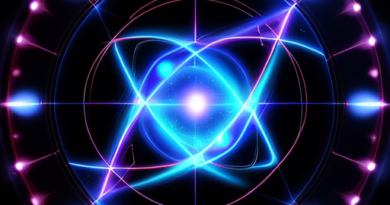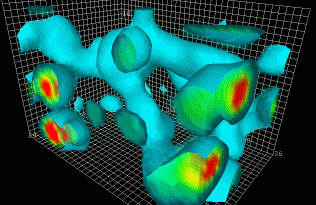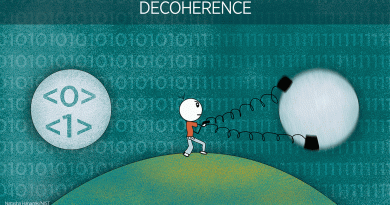Nature is subtle
Luboš Motl, February 26, 2015
Caltech has created their new Walter Burke Institute for Theoretical Physics. It’s named after Walter Burke – but it is neither the actor nor the purser nor the hurler, it’s Walter Burke the trustee so no one seems to give a damn about him.
That’s why John Preskill’s speech focused on a different topic, namely his three principles of creating the environment for good physics.
His principles are, using my words,
- the best way to learn is to teach
- two-trick ponies (people working at the collision point of two disciplines) are great
- Nature is subtle
Let me say a few words about these principles.
Teaching as a way of learning
First, for many of us, teaching is indeed a great way to learn. If you are passionate about teaching, you are passionate about making things as clear to the «student» that he or she just can’t object. But to achieve this clarity, you must clarify all the potentially murky points that you may be willing to overlook if the goal were just for you to learn the truth.
You «know» what the truth is, perhaps because you have a good intuition or you have solved similar or very closely related things in the past, and it’s therefore tempting – and often useful, if you want to save your time – not to get distracted by every doubt. But a curious, critical student will get distracted and he or she will interrupt you and ask the inconvenient questions.
If you are a competent teacher, you must be able to answer pretty much all questions related to what you are saying, and by getting ready to this deep questioning, you learn the topic really properly.
I guess that John Preskill would agree that I am interpreting his logic in different words and I am probably thinking about these matters similarly to himself. Many famous physicists have agreed. For example, Richard Feynman has said that it was important for him to be hired as a teacher because if the research isn’t moving forward, and it often isn’t, he still knows that he is doing something useful.
But I still think it’s fair to say that many great researchers don’t think in this way – and many great researchers aren’t even good teachers. Bell Labs have employed numerous great non-teacher researchers. And on the contrary, many good teachers are not able to become great researchers. For those reasons, I think that Preskill’s implicit point about the link between teaching and finding new results isn’t true in general.
Two-trick ponies
Preskill praises the concept of two-trick ponies – people who learn (at least) two disciplines and benefit from the interplay between them. He is an example of a two-trick pony. And it’s great if it works.
On the other hand, I still think that a clear majority of the important results occurs within one discipline. And most combinations of disciplines end up being low-quality science. People often market themselves as interdisciplinary researchers because they’re not too good in either discipline – and whenever their deficit in one discipline is unmasked, they may suggest that they’re better in another one. Except that it often fails to be the case in all disciplines.
So the interdisciplinary research is often just a euphemism for bad research hiding its low quality. Moreover, even if one doesn’t talk about imperfect people at all, I think that random pairs of disciplines (or subdisciplines) of science (or physics) are unlikely to lead to fantastic off-spring, at least not after a limited effort.
Combinations of two disciplines have led and will probably lead to several important breakthroughs – but they are very rare.
There is another point related to the two-trick ponies. Many breakthroughs in physics resulted from the solution to a paradox. The apparent paradox arose from two different perspectives on a problem. These perspectives may usually be associated with two subdisciplines of physics.
Einstein’s special relativity is the resolution of disagreements between classical mechanics and classical field theory (electromagnetism) concerning the question how objects behave when you approach the speed of light. String theory is the reconciliation of the laws of the small (quantum field theory) and the laws of the large (general relativity), and there are other examples.
Even though the two perspectives that are being reconciled correspond to different parts of the physics research and the physics community, they are often rather close sociologically. So theoretical physicists tend to know both. The very question whether two classes of questions in physics should be classified as «one pony» or «two monies» (or «more than two ponies») is a matter of conventions. After all, there is just one science and the precise separation of science into disciplines is a human invention.
This ambiguous status of the term «two-trick pony» seriously weakens John Preskill’s second principle. When we say that someone is a «two-trick pony», we may only define this proposition relatively to others. A «two-trick pony» is more versatile than others – he knows stuff from subdisciplines that are further from each other than the subdisciplines mastered by other typical ponies.
But versatility isn’t really the general key to progress, either. Focus and concentration may often be more important. So I don’t really believe that John Preskill’s second principle may be reformulated as a general rule with the universal validity.
Nature is subtle
However, I fully agree with Preskill’s third principle that says that Nature is subtle. Subtle is Nature but malicious She is not. 😉 Preskill quotes the holographic principle in quantum gravity as our best example of Nature’s subtle character. That’s a great (but not the greatest) choice of an example, I think. Preskill adds a few more words explaining what he means by the adjective «subtle»:
Yes, mathematics is unreasonably effective. Yes, we can succeed at formulating laws of Nature with amazing explanatory power. But it’s a struggle. Nature does not give up her secrets so readily. Things are often different than they seem on the surface, and we’re easily fooled. Nature is subtle.
Nature isn’t a prostitute. She is hiding many of Her secrets. That’s why the self-confidence of a man who declares himself to be the naturally born expert in Nature’s intimate organs may often be unjustified and foolish. The appearances are often misleading. The men often confuse the pubic hair with the swimming suit, the \(\bra{\rm bras}\) with the \(\ket{\rm cats}\) beneath the \(\bra{\rm bras}\), and so on. We aren’t born with the accurate knowledge of the most important principles of Nature.
We have to learn them by carefully studying Nature and we should always understand that any partial insight we make may be an illusion. To say the least, every generalization or extrapolation of an insight may turn out to be wrong.
And it may be wrong not just in the way we can easily imagine – a type of wrongness of our theories that we’re ready to expect from the beginning. Our provisional theories may be wrong for much more profound reasons.
Of course, I consider the postulates of quantum mechanics to be the most important example of Nature’s subtle character. A century ago, physicists were ready to generalize the state-of-the-art laws of classical physics in many «understandable» ways: to add new particles, new classical fields, new terms in the equations that govern them, higher derivatives, and so on. And Lord Kelvin thought that even those «relatively modest» steps had already been completed, so all that remained was to measure the parameters of Nature more accurately than before.
But quantum mechanics forced us to change the whole paradigm. Even though the class of classical (and usually deterministic) theories seemed rather large and tolerant, quantum mechanics showed that it’s an extremely special, \(\hbar=0\) limit of more general theories of Nature (quantum mechanical theories) that we must use instead of the classical ones. The objective reality doesn’t exist at the fundamental level.
(The \(\hbar=0\) classical theories may look like a «measure zero» subset of the quantum+classical ones with a general value of \(\hbar\). But because \(\hbar\) is dimensionful in usual units and its numerical value may therefore be changed by any positive factor by switching to different units, we may only qualitatively distinguish \(\hbar=0\) and \(\hbar\neq 0\). That means that the classical and quantum theories are pretty much «two comparably large classes» of theories. The classical theories are a «contraction» or a «limit» of the quantum ones; some of the quantum ones are «deformations» of the classical ones. Because of these relationships, it was possible for the physicists to think that the world obeys classical laws although for 90 years, we have known very clearly that it only obeys the quantum laws.)
Quantum mechanics demonstrated that people were way too restrictive when it came to the freedoms they were «generously» willing to grant to Nature. Nature just found the straitjacket to be unacceptably suffocating. It simply doesn’t work like that. Quantum mechanics is the most important example of a previously unexpected difficulty but there are many other examples.
At the end, the exact theory of Nature – and our best approximations of the exact theory we may explain these days – are consistent. But the very consistency may sometimes look surprising to a person who doesn’t have a sufficient background in mathematics, who hasn’t studied the topic enough, or who is simply not sufficiently open-minded or honest.
The lay people – and some of the self-styled (or highly paid!) physicists as well – often incorrectly assume that the right theory must belong to a class of theories (classical theories, those with the objective reality of some kind, were my most important example) they believe is sufficiently broad and surely containing all viable contenders. They believe that all candidates not belonging to this class are crazy or inconsistent. They violate common sense, don’t they?
But this instinctive expectation is often wrong. In reality, they have some evidence that their constraint on the theory is a sufficient condition for a theory to be consistent. But they often incorrectly claim that their restriction is actually a necessary condition for the consistency, even though it is not. In most cases, when this error takes place, the condition they were willing to assume is not only unnecessary; it is actually demonstrably wrong when some other, more important evidence or arguments are taken into account.
A physicist simply cannot ignore the possibility that assumptions are wrong, even if he used to consider these assumptions as «obvious facts» or «common sense». Nature is subtle and not obliged to pay lip service to sensibilities that are common. The more dramatic differences between the theories obeying the assumption and those violating the assumption are, the more attention a physicist must pay to the question whether his assumption is actually correct.
Physicists are supposed to find some important or fundamental answers – to construct the big picture. That’s why they unavoidably structure their knowledge hierarchically to the «key things» and the «details», and they prefer to care about the former (leaving the latter to the engineers and others). However, separating ideas into «key things» and «details» mindlessly is very risky because the things you consider «details» may very well show that your «key things» are actually wrong, the right «key things» are completely different, and many of the things you consider «details» are not only different than you assumed, but they may actually be some of the «key things» (or the most important «key things»), too!
Of course, I was thinking about very particular examples when I was writing the previous, contrived paragraph. I was thinking about bad or excessively stubborn physicists (if you want me to ignore full-fledged crackpots) and their misconceptions. Those who believe that Nature must have a «realist» description – effectively one from the class of classical theories – may consider all the problems (of the «many worlds interpretation» or any other «realist interpretation» of quantum mechanics) pointed out by others to be just «details». If something doesn’t work about these «details», these people believe, those defects will be fixed by some «engineers» in the future.
But most of these objections aren’t details at all and it may be seen that no «fix» will ever be possible. They are valid and almost rock-solid proofs that the «key assumptions» of the realists are actually wrong. And if someone or something may overthrow a «key player», then he or it must be a «key player», too. He or it can’t be just a «detail»! So if there seems to be some evidence – even if it looks like technical evidence composed of «details» – that actually challenges or disproves your «key assumptions», you simply have to care about it because all your opinions about the truth, along with your separation of questions to the «big ones» and «details», may be completely wrong.
If you don’t care about these things, it’s too bad and you’re very likely to end in the cesspool of religious fanaticism and pseudoscience together with assorted religious bigots and Sean Carrolls.


